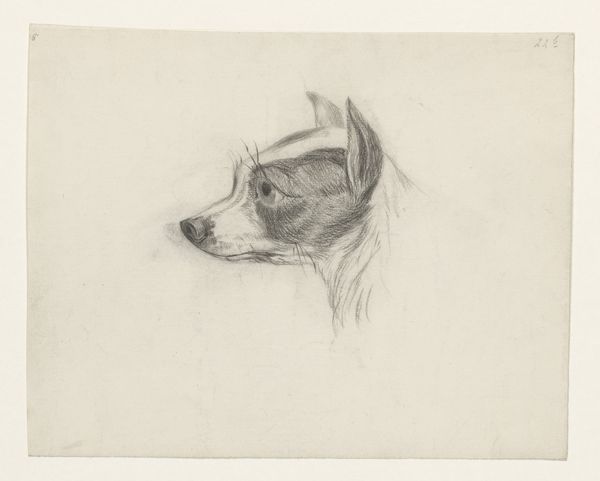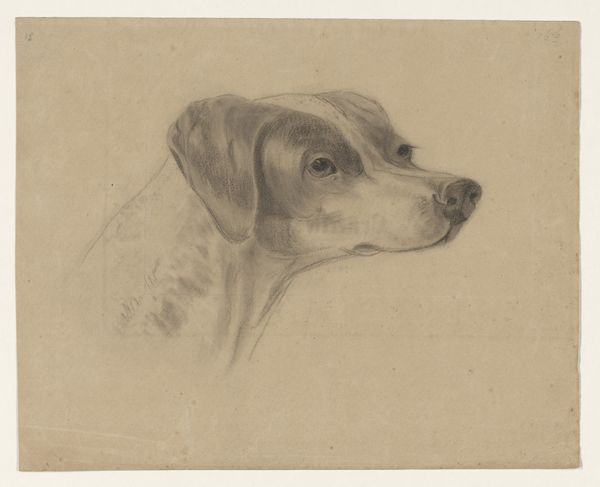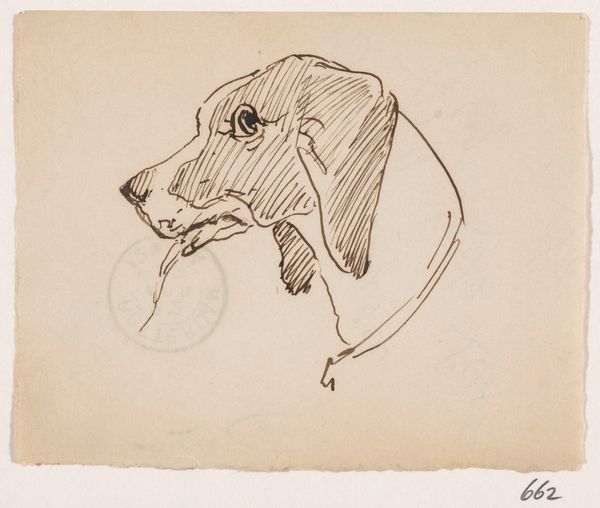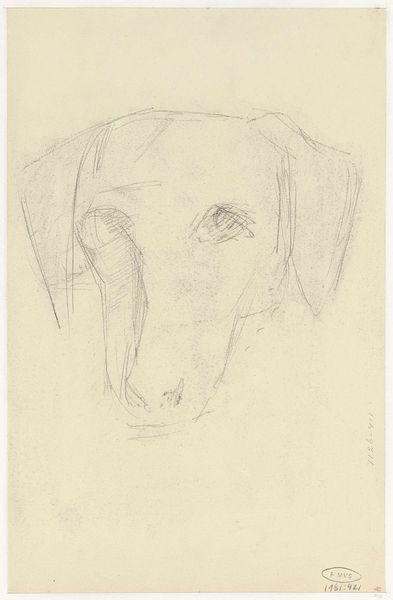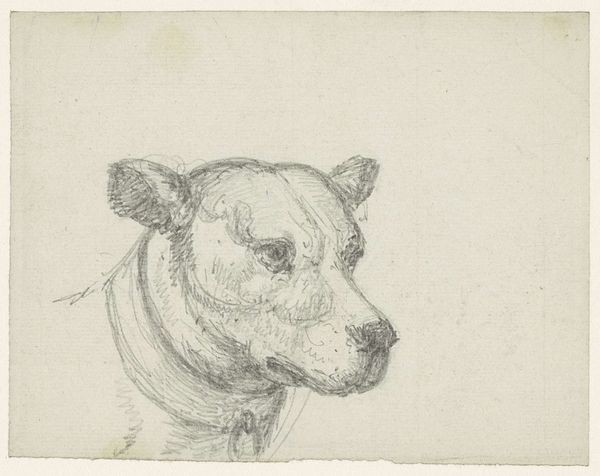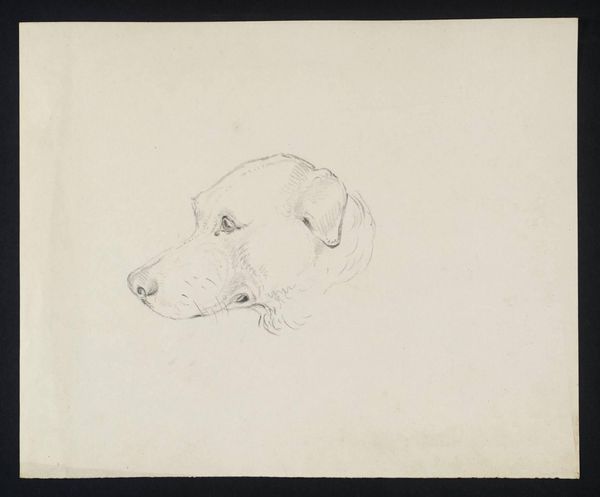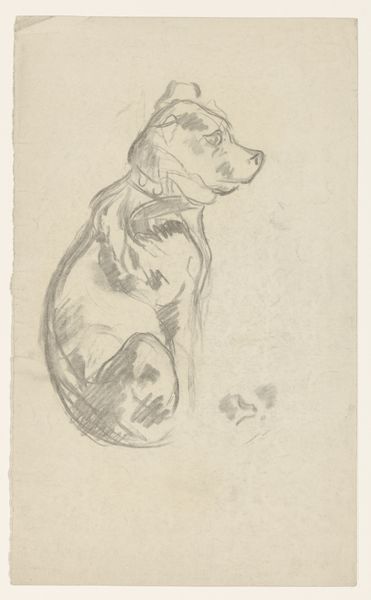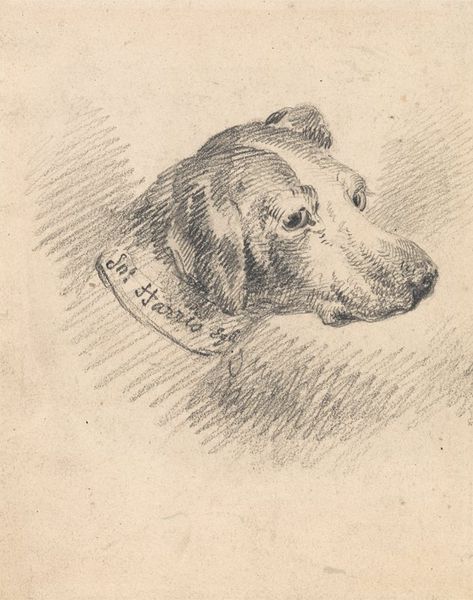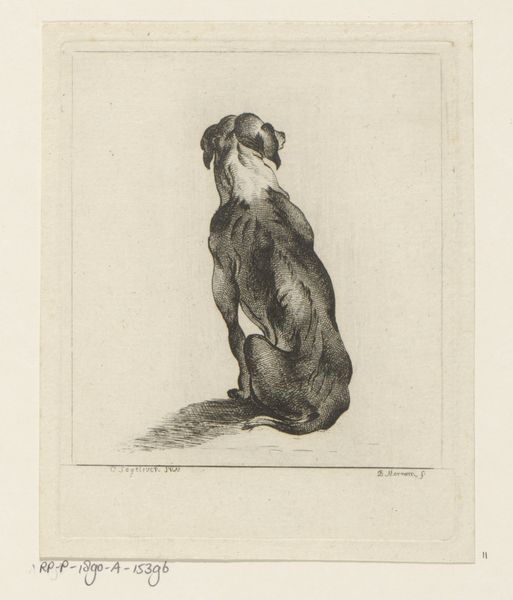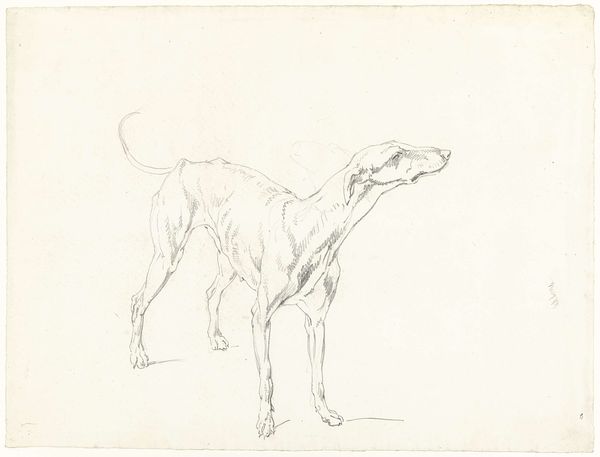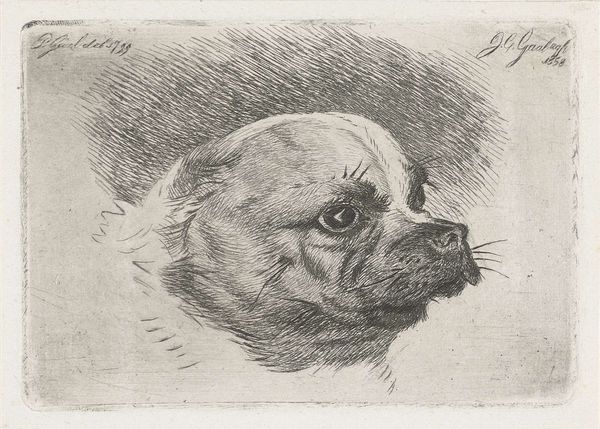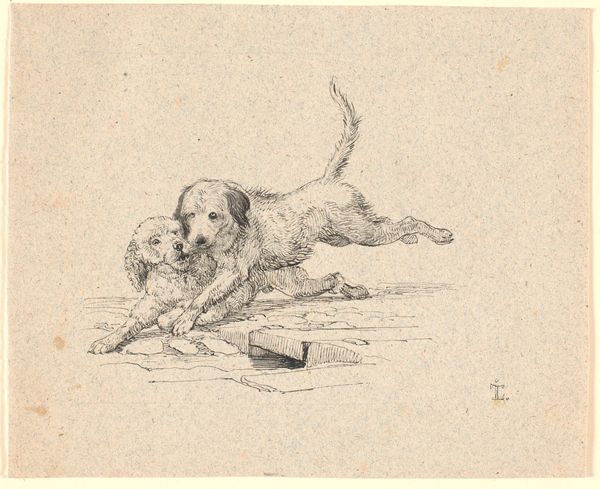
drawing, pencil
#
portrait
#
pencil drawn
#
drawing
#
pencil sketch
#
dog
#
pencil drawing
#
romanticism
#
pencil
#
portrait drawing
#
realism
Dimensions: height 162 mm, width 198 mm
Copyright: Rijks Museum: Open Domain
Curator: Look at this remarkable drawing, “Head of a Dog, facing Right," made around 1812 by Jean Bernard. Currently residing at the Rijksmuseum, it's rendered in pencil on paper. What are your first thoughts? Editor: There’s something incredibly vulnerable about its upward gaze. The dog appears almost expectant, its posture conveying a quiet anticipation. Curator: Bernard’s choice to depict this animal in profile highlights a tradition, reminiscent of heraldic animals seen throughout European history. The dog, particularly, holds significant cultural weight, embodying loyalty, guidance, and protection in various traditions. Editor: Notice the precision of the pencil work, though. Bernard meticulously captures the texture of the dog's fur. See the subtle gradations that create volume around the eye, lending a sense of tangible reality to the image. It transcends mere representation, wouldn't you say? Curator: Absolutely, the eye is particularly striking, filled with light. In symbolic terms, the eye often represents insight, awareness, even guardianship. And let’s not forget the context – early 19th century Europe, witnessing the rise of scientific classification alongside deeply held superstitions. Animals at the time blurred lines between pets and symbolic representations. Editor: I’m intrigued by the apparent lack of background detail. By isolating the head, Bernard focuses all attention on the formal arrangement. The diagonal axis from nose to neck, balanced by the gentle curve of the ear. Do you think it makes the viewer study those aspects more keenly? Curator: Yes, and there's something inherently psychological here. Is the dog anticipating a treat, a command, affection? The drawing becomes less about capturing a dog, and more about representing expectation itself. This reflects broader anxieties of the Romantic era: uncertainty and longing for the unobtainable. Editor: It certainly encourages contemplation beyond the purely representational. Analyzing the use of line, tone, and composition allows an avenue for broader contextual understandings. Curator: Seeing the image as both cultural artifact and example of representational drawing illuminates this portrait as a powerful expression of human-animal connection, and a piece laden with its moment in time. Editor: Indeed. Formal elements interact with layers of cultural symbolism.
Comments
No comments
Be the first to comment and join the conversation on the ultimate creative platform.
